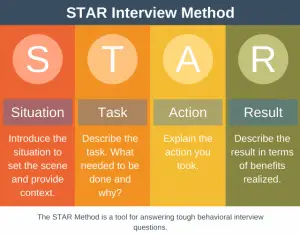During the financial crisis of 2008 many executives lost their jobs. It wasn’t uncommon to arrive into the office one morning at the usual time only to find yourself clearing your desk and with indefinite free time by lunchtime. At this stage people are obviously in shock and angry, as a large part of their life has been quickly withdrawn, not to mention their pay cheque (see The Change Curve to understand this). Once the initial shock is overcome people dust themselves off, update their resume, and begin the process of finding new employment. One way to stack the odds of finding new employment in your favour (which as corollary may even decrease the likelihood of you being laid off in the first place) is to spend time whilst you are employed developing and maintaining your professional network.
Here is a step-by-step guide to building and maintaining your professional network:
Step 1: Identify your Network Area
Networking takes time and effort and you’re not going to be able to build and maintain a relationship with everyone that you meet professionally. For this reason it is important to think about who you would like to network with. Would you prefer to be an executive in a large Fortune 500 company, work for a smaller organization, or even a start-up? What types of roles are you interested: general management, program managemet, or marketing etc? Think of this step as laying the foundations of your future career, whilst answering some large career related questions in the process, like what’s the point of networking with Fortune 500 executives if you want to run a startup?
Step 2: Identify your Initial Network
Here we begin the process of building your professional network. To identify people for your network ask yourself which current and former collegues you should reach out to? Which customers have appreciated your efforts in the past? Are there any vendors you should reach out to? Essentially in this step you’re building your initial contact list.
Step 3: Start Building your Network
The easiest way to do this is to make use of existing networking tools. Linkedin is a fantastic place to start. Feel free to connect with me here too. Create yourself an account and start making initial contact with those people you’ve identified.
Step 4: Maintain and Build the Network
This step is also known as the tricky bit. With any professional network, you’ll get out of it what you put in. The more you put in, the more interesting opportunities will come your way. However, you should not think about what you can get out of your network, and instead just focus on simply giving and contributing to your network. Be helpful, share what you know, and connect people to other people when the opportunity arrises. Remember that using tools like Linkedin to build your network is easy but you have to spend time building relationships with the people in your network in order to get value out of it.
For this reason you should focus on quality and diversity within your network. By quality I mean don’t just add numbers to your network for the sake of it – remember that you have to expend effort maintaining this network later. By diversity I mean connect with people outside the functional area in which you work, connect with people outside of your organization and outside of your industry.
So how do you go about working your network? One strategy that works for me is to wish my network members happy birthday once a year. Another is to enquire if they’d like to meet for a drink after work whenever I’m visiting their town on business. Another is to contact them regularly about any shared passions we have outside of the office. In my case it’s usually cycling. If someone in my network shares this passion it makes it really easy for me to maintain a connection with them. Finally, it’s a good idea to simply make some time regularly to think about how you can help people in your network.
Step 5: Analyse your Network
From time to time check your network to identify any shortcomings with your network structure. For example, do you have enough business leaders, or enough people with whom can mentor you.
Summary
So, project managers and program managers, if you give generously to your network then you will be amazed at the generosity of those within your network. Social capital is a hugely underrated asset, and is a great tool for making efficient progress towards your career goals. Ultimately you need to invest in you network before you will begin to receive benefit from it. You have to watch out for social networks becoming a time sink for you, but… nurture your network and it will nurture you.










